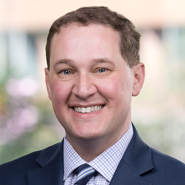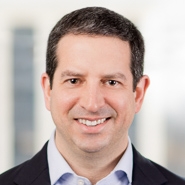Toxic Tort and Product Liability Quarterly
Causation
California Appellate Court Upholds “Every Exposure” Theory
Deferring to the role of a jury in resolving questions of competing scientific theories, a California appeals court upheld a trial court’s ruling allowing expert testimony based on the “every exposure” theory, calling it “the subject of legitimate scientific debate.” See Davis v. Honeywell Int’l Inc., 199 Cal.Rptr.3d 583 (Cal. Ct. App. 2016).
Plaintiff brought suit for wrongful death and negligence, among other claims, alleging decedent’s exposure to asbestos in Defendant’s brake linings during the 1960s and 70s contributed to his development of mesothelioma and subsequent death. After the trial court allowed expert testimony on the “every exposure” theory, which states that even low doses of asbestos are substantial factors contributing to the aggregate dose of asbestos that causes mesothelioma, a jury found for Plaintiff and awarded $2 million in damages.
Defendant appealed, arguing that the expert testimony relying on every exposure theory should have been excluded as speculative and devoid of evidentiary and logical support. In upholding the trial court’s decision to allow the testimony, the Court held that although the trial court has a duty to act as a “gatekeeper” in excluding “clearly invalid and unreliable” expert opinion, its role is not to choose between expert opinions. Id. at 590. The Court found that the theory could be reconciled with the defense expert’s opinion that mesothelioma and other asbestos-related diseases are dose-dependent. Therefore it was up to the jury, not the judge, to decide which opinion to apply.
Fifth Circuit Affirms Exclusion of Expert Testimony Tying Gasoline to AML
The U.S. Court of Appeals for the Fifth Circuit upheld a trial court’s decision to exclude expert testimony that exposure to gasoline caused acute myeloid leukemia (AML) in a former gas station attendant and mechanic, highlighting the importance of the distinction between a product and its component parts in exposure cases. See Burst v. Shell Oil Co., 2016 WL 2989261 (5th Cir. May 23, 2016).
Plaintiff alleged that her late husband was exposed to benzene in gasoline during his work at various service stations from 1958 through 1971 and that such exposure caused his AML. Plaintiff relied on expert reports and testimony from a medical doctor and an epidemiologist. The trial court excluded the general causation testimony of both witnesses. It found the medical doctor’s methodology unreliable because he did not demonstrate why studies specific to benzene exposure could reliably support his conclusion that gasoline exposure can cause AML. It found the epidemiologist’s methodology unreliable because he also relied on benzene-exposure studies and otherwise relied on gasoline-exposure studies that provided an inadequate basis for his opinion.
On appeal, the Fifth Circuit affirmed. The Court found the trial court’s opinion was “thorough and well-reasoned,” with specific and detailed findings as to the deficiencies in the experts’ testimony. Id. at 1. Therefore, the Court held, the trial court did not abuse its discretion in excluding the experts’ opinions.
Union Carbide Corp. Not Liable for Property Damage From 1984 Bhopal Leak
In the most recent case stemming from the 1984 chemical plant leak in Bhopal, India, the U.S. Court of Appeals for the Second Circuit further clarified the circumstances in which an entity other than the owner or operator of a site may be liable at common law for a chemical release at that site. See Sahu v. Union Carbide Corporation, No. 14-3087-cv (2d Cir. May 24, 2016). Plaintiffs claimed property damage from leaks from a waste storage facility at the Union Carbide India Limited (UCIL) plant in Bhopal and sued Union Carbide Corporation (UCC), a majority stockholder in UCIL, for nuisance, trespass, strict liability, and negligence.
Plaintiffs argued the trial court, when it granted the Defendant’s motion for summary judgment, misapplied the Second Circuit’s “substantial factor” causation standard. The Second Circuit held that proving UCC’s conduct was a “substantial factor” contributing to an injury would require showing UCC had the requisite “knowledge” of the risk and “substantial certainty” of ultimate injury. The Court noted there is no indication that UCC knew anything about UCIL’s waste handling system or that it might leak, and found that “no reasonable juror could find that UCC participated in the creation of the injury on any theory of liability.” Slip op. at *8.
New York Court Dismisses Chemical Sensitivity Claims for Lack of Causation
Illustrating the difficulty in pursuing a multiple chemical sensitivity (MCS) claim, a New York appeals court upheld the dismissal of Plaintiff’s toxic tort claim because he failed to establish a causal link between chemical exposure and his symptoms. See Abrams v. Related, L.P., 2016 BL 91070 (N.Y. App. Div. March 24, 2016).
Plaintiff alleged personal injuries from exposure to fumes emanating from a flooring adhesive used in an adjacent apartment. In upholding the trial court’s grant of Defendants’ motion for summary judgment, the Court held that Plaintiff, by failing to identify his expert witnesses as required, was unable to prove general or specific causation linking the adhesive and his alleged injuries. The Court also held that, even if Plaintiff had timely designated his expert witnesses, he still did not establish general causation connecting this adhesive to MCS, nor did he connect his exposure to the adhesive to his illness. Defendants, on the other hand, offered expert affidavits “stating that [MCS] is not a scientifically or medically recognized condition, that a causal connection between MCS and chemical exposure has not been accepted in the scientific community, and that [Plaintiff’s] level of exposure to chemicals in [the adhesive] could not have caused his claimed illness.” Slip op. at *117.
Class Actions
Eighth Circuit Rejects Bifurcated TCE Class Certification
In a case that highlights the complexity of structuring class actions, the U.S. Court of Appeals for the Eighth Circuit reversed a trial court’s decision to certify a class claiming damages from trichloroethylene (TCE) contamination. See Ebert v. Gen Mills, Inc., 823 F.3d 472 (8th Cir. 2016). The Eighth Circuit held that the trial court abused its discretion by narrowing the putative class and the issues before the court.
The putative class alleged in Minnesota federal court that TCE vapor from a plume under Defendant’s former facility threatened the health of residents and diminished property values in the surrounding neighborhood. After excluding class members with personal injury claims and bifurcating the action into liability and damages phases, the trial court certified two classes: a declaratory or injunctive relief class for the liability phase and a damages class for the damages phase.
On appeal, the Eighth Circuit found that the trial court abused its discretion by certifying the classes. “[B]y bifurcating the case and narrowing the question for which certification was sought, the district court limited the issues and essentially manufactured a case that would satisfy the Rule 23(b)(3) predominance inquiry.” Id. at 479. Given the varied conditions at each class member’s property, the Court reasoned, “[t]he district court's narrowing and separating of the issues ultimately unravels and undoes any efficiencies gained by the class proceeding because many individual issues will require trial.” Id.
With similar reasoning, the Court held that the class also failed to satisfy the requirements of a declaratory or injunctive relief class: “Rule 23(b)(2) applies only when a single injunction or declaratory judgment would provide relief to each member of the class.” Id. at 480 (quotation omitted). Because different conditions at each neighboring property would require different remediation, a single judgment would be inadequate.
Statute of Limitations
Vermont’s Statewide MTBE Claims Time-Barred
In an opinion that reinforces the importance of the statute of limitations to defendants, the Vermont Supreme Court upheld a trial court’s decision that the State’s claims of a “generalized injury” from methyl tertiary butyl ether (MTBE) groundwater contamination were time-barred under Vermont law. See State of Vermont v. Atlantic Richfield Co., 2016 VT 61 (May 27, 2016). The State brought suit in 2014, alleging that gasoline refiners and marketers were liable for knowingly distributing gasoline containing the oxygenate, which then leaked into groundwater across the state.
Defendants argued in a motion to dismiss that the State was aware of any alleged injury to groundwater when it enacted its MTBE ban nine years prior to bringing the suit, and therefore the State’s claims were outside of the six-year statute of limitations. The State claimed a 1785 statue that excludes claims relating to “lands belonging to the state” from the six-year limitations period applied here because the State holds groundwater in public trust. The State also argued that its general claims arising under a 2008 statute that establishes a state policy to protect groundwater resources are not time-barred because that statute became effective less than six years before Vermont filed its complaint. In January 2015, the trial court rejected the State’s arguments and dismissed the State’s claims to the extent they alleged a generalized injury to Vermont’s groundwater system as a whole.
The Court reaffirmed the trial court’s decision on interlocutory appeal. It held that the state lands exception has been consistently interpreted to apply only to claims of ownership of state property, not to generalized claims of injury. The Court also explained that, absent a showing of legislative intent, a statute cannot be read to include “unlimited retroactive application to conduct and injuries that occurred . . . decades prior to its enactment.” The State, the Court found, could make no such showing here.
The Court left open questions that were not part of the appeal, including whether the state-lands exception could apply to specific instances of groundwater contamination, and whether the continuing tort doctrine saves the State’s claims from the statute of limitations at specific sites.
Nuisance Claims for Injunctive Relief Not Barred by New York’s Statute of Limitations
In a case that highlights the importance of careful pleading in toxic tort cases, a New York federal court revived a landowner’s nuisance claim related to gasoline contamination, to the extent the Plaintiff sought injunctive relief. See Plumbing Supply, LLC v. ExxonMobil Oil Corp., 14-cv-3674 (S.D.N.Y. May 27, 2016).
Plaintiff owns a business located between two gasoline stations. Each station has had several gasoline releases over the last 30 years, which Plaintiff alleges have caused soil and groundwater contamination and hydrocarbon vapor intrusion at the Plaintiff’s business. Remediation activities related to those spills revealed petroleum contamination on Plaintiff’s property as early as May 2008. Plaintiff brought suit in 2014 against the owners of both stations, alleging among other things common-law negligence, trespass, and nuisance. These claims are subject to a general three-year statute of limitations. Defendants moved to dismiss, arguing that the Plaintiff knew or should have known of the contamination in 2008. In a March 2016 opinion, the Court agreed and dismissed the common law and statutory claims.
Plaintiff moved for reconsideration of the Court’s dismissal of the nuisance claim insofar as Plaintiff sought injunctive relief. Plaintiff argued that its nuisance claim was not time-barred to the extent Plaintiff sought to abate a continuing nuisance. The Court agreed and granted Plaintiff’s motion to reinstate the nuisance claim for injunctive relief. It noted New York’s statute of limitations applies only to claims for monetary damages and found Plaintiff’s complaint clearly alleges that “Defendants are liable, jointly and severally, to abate the nuisance at [Plaintiff’s] site.” Slip op. at *3.
Jury Verdict
Missouri Federal Jury Awards $20.6 Million for TCE Exposure, No New Trial
A Missouri federal court denied a ball bearings manufacturer’s request for a new trial after a jury hit it with $20.6 million in compensatory and punitive damages in a trichloroethylene (TCE) exposure case, and the Court denied Defendants’ request for a new trial. Kirk v. Schaeffler Group USA, Inc., No. 3:13-cv-5032 (W.D. Mo. July 13, 2016).
Plaintiff is a 28-year-old woman who grew up near Defendants’ Joplin, MO manufacturing plant. She brought common law claims, alleging childhood exposure to TCE in groundwater, soil, and soil vapor caused her autoimmune hepatitis and other serious ailments. A federal jury awarded $7.6 million in compensatory damages and $13 million in punitives, finding Defendants showed indifference or conscious disregard for the safety of others.
Defendants moved for a new trial, arguing the Court committed a host of errors, and that the jury award was excessive. The Court denied Defendants’ motion. The Court found no error in, among other things, admitting government documents on TCE exposure standards and limiting Defendants’ expert and lay testimony on TCE contamination and exposure. The Court also found the jury’s compensatory damages award was not excessive. Defendants argued $7.6 million for actual damages is more than twice the Plaintiff’s damages experts’ worst-case scenario. The Court noted, however, that jury compensatory damages include both economic and non-economic damages. The Court found the Plaintiff’s experts demonstrated she suffered $3 million in economic damages, and Plaintiff otherwise offered credible evidence on additional non-economic damages. Therefore the jury’s compensatory award was not excessive.
Beveridge & Diamond's Toxic Tort and Environmental Tort practice group defends large companies in virtually all industries against toxic tort and product liability claims involving a wide range of chemicals and related substances, including metals such as arsenic, lead, and mercury. While the majority of clients tend to be in oil, chemicals, and manufacturing, we represent any type of company with actual or potential exposure to toxic tort liability or product liability. For more information, contact the authors.











